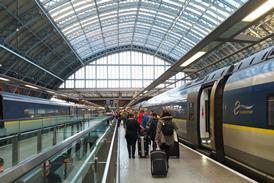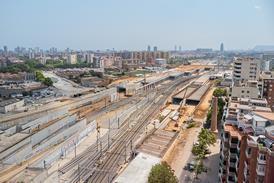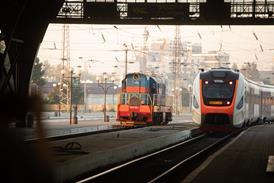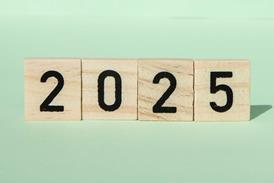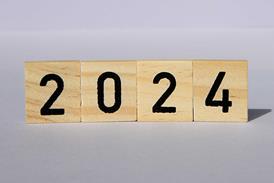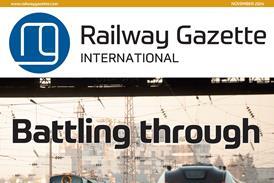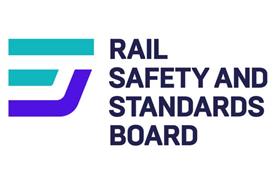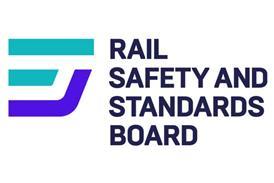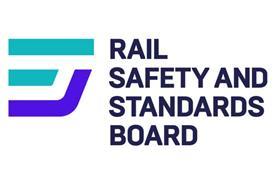INTRO: JR West, in co-operation with JR Central, has introduced a novel design of EMU on overnight services from Tokyo to Izumoshi and Takamatsu. These innovative trains offer a range of stylish accommodation varying from hotel quality bedrooms to simple bunks
BYLINE: Masayasu Matsuoka
Chief ManagerRolling Stock DepartmentWest Japan Railway
ON JULY 10 JR West launched Sunrise Express service from Tokyo to Izumoshi and Takamatsu, operated with a fleet of specially-built Series 285 electric trainsets. A pair of Class 285s leaves Tokyo at 22.00 to arrive in Okayama at 06.27 the next morning. Here the sets divide, with one proceeding as the Seto to Takamatsu, 805 km from Tokyo on the island of Shikoku, for an 07.27 arrival. The second set runs as the Izumo via Yonago and Matsue to arrive in Izumoshi on the Sea of Japan coast at 09.59. The timings have been chosen so that the Tokyo departure is after the last flight of the day, with arrival at destination before the next morning’s first flight. Return timings are similar.
Built by Kinki Sharyo, Kawasaki Heavy Industries and Nippon Sharyo, Series 285 has been designed to the requirements of JR West and JR Central, which have overseen development of the new trains. JR West has ordered three sets and JR Central two, and JR East and JR Shikoku are also involved in the operation. The JR companies believe that the use of these novel EMUs will offer lower operating costs for the Sunrise Express services cpmpared to the locomotive-hauled Blue Train sleepers which they replace.
Double-deck sleepers
All seven cars in a Series 285 are double-deck with the bodyshells built to the largest cross-sectional area possible within the loading gauge of JR’s 1067mm gauge routes. Each unit has accommodation for up to 158 passengers in six distinct categories. These range from Single Deluxe rooms to more basic ’Nobi Nobi’ berths with simple transverse bunks on two levels. All private rooms have berths arranged longitudinally; each room is equipped with a radio, alarm clock and electrical outlet and individual controls for heating, lighting and air-conditioning. There is a staff call button in each room and a fire detector.
Unique to the Sunrise Express, the six Single Deluxe rooms on the upper deck of the centre trailer car are each equipped with a large desk, LCD television with three satellite channels and a private washbasin. Six Sunrise Twin rooms are located on the lower deck. Access to the rooms in this car is via steps from a side corridor to pairs of rooms; each passenger has a bedside lighting and radio control panel.
Five cars contain ’Single Twin’ and Single accommodation. Designed for use by one or two people, Single Twin rooms have two bunks, with the upper berth folding up if the compartment is booked for single use. Single rooms occupy about half the train, forming the standard private accommodation on the Sunrise Express. Basic layout is the same as the Single Twin, with a table at the foot of the bed and a control panel at the head; Single rooms are classified as top, bottom and end, depending on their location within the car.
Basic accommodation for one person is available in the Solo private room. One car in each set has 20 Solo berths, and this vehicle also has a mini-salon with large windows where passengers can sit and stargaze or watch the sunrise.
For those passengers requiring budget accommodation, the Sunrise Express has one car fitted with Nobi Nobi Seats. Described by JR as ’special flat seats’, these are bunks laid out in two tiers of 14. Each position is separated by a wooden screen at the head end, where there is also a small shelf and individual lighting controls. Steps are provided to pairs of bunks on the upper tier.
One Single Twin room in each set is laid out for use by disabled people, who also have access to a special washstand and toilet.
Western and Japanese style toilets are provided in most cars, and there are two shower rooms, one of which is for use by passengers booked in Single Deluxe berths. The showers require use of a prepaid card giving a shower lasting for about 6min. Sprinklers and floor blowers clean the shower automatically after each use. Vending machines for drinks and snacks are provided in two cars.
Throughout the train the designers have made efforts to create a light and attractive interior. Extensive use has been made of woods and wood composites, with cherry wood for walls and an ivory colour picked for the ceilings. Green, brown and blue have been chosen for the furnishings ’to reflect a natural image of forests and lakes’.
Traction equipment
Maximum speed is 130 km/h. There are two power cars, both equipped with four 220 kW AC traction motors and one single-arm pantograph for the 1·5 kV DC supply. Variable-voltage variable-frequency control equipment feeding three-phase AC motors has been adapted from that fitted to other JR rolling stock. The auxiliary power supply is dimensioned to meet the heavy requirements of an overnight train.
Regenerative braking is installed, but roof-mounted resistors are also fitted for rheostatic braking if required. JR’s latest train protection and warning systems are provided.
The Series 285 rides on lightweight bolsterless bogies derived from those used under JR West’s Series 223-1000 commuter EMU, adapted by the addition of sanding gear, yaw dampers and anti-roll equipment. Braking equipment includes discs on the driving trailers and tread brakes on the motor cars.
Two air-conditioning packs are installed on the roof of each car. Individual control of air flows in each room could cause the air flow to fluctuate as passengers alter the air environment in their own sleeping areas. This is avoided by diverting flows to the gangway if the flow to a compartment is closed off. o
CAPTION: The Sunrise Express is built to make best possible use of the loading gauge
CAPTION: Fig 1. Layout of four of the Sunrise Express cars: from left to right the MN, TNWS, MN2 and TNWC . The MN has Solo berths on both decks and a mini-salon, and the TNWS Single Deluxe on the upper deck and Sunrise Twin on the lower deck. The MN2 features Nobi Nobi Seats on both decks, and the TNWC has a mix of Single and Single Twin compartments
CAPTION: Above: Single Deluxe passengers enjoy a spacious room with desk and washing area on the upper deck
Below: Sunrise Twin room on the lower deck of one car
Bottom: Nobi Nobi Seats provide an option for budget travellers
Technical data for JR’s
Sunrise Express
TABLE: Gauge mm 1067
Power supply 1·5 kV DC
End car length mm 21240
Intermediate car length mm 20800
Distance between bogie centres mm 14150
Car height mm 4090
Car width mm 2935
Wheel diameter (new) mm 860
Total train weight tonnes 305
Maximum speed km/h 130
Nominal traction motor rating kW 220
Capacity: 158
Single Deluxe 6 berths
Sunrise Twin 8 berths
Single/Single Twin 96 berths
Solo 20 berths
Nobi-Nobi Seats 28
Relance des trains de nuit au Japon, avec le Sunrise Express
Le 10 juillet, les compagnies JR West et JR Central mettent en service, pour le Sunrise Express, des automotrices électriques composées de voitures-lits au design innovant. Elles circulent de Tokyo à Izumoshi et Takamatsu. Les sept voitures à deux niveaux de chaque élément sont construites aux limites du gabarit des lignes des JR à l’écartement de 1067mm, de manière à offrir le maximum d’espace possible à l’intérieur des voitures. Les aménagements s’échelonnent des chambres de qualité h

